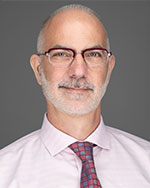Can Your Environment Cause Cancer?
Our environment is comprised of everything that surrounds us and anything that may have an effect on us, from the air we breathe to the food and drinks we nourish our body with. Human health is largely impacted by environmental factors, and research continues to show that certain ones may increase our risk for cancer. The good news is we can control many of these exposures.
Here’s what our Moffitt Cancer Center experts had to say.

Dr. Peter Kanetsky, chair and program leader, Cancer Epidemiology Program
Ultraviolet Radiation
Ultraviolet (UV) rays from the sun can cause DNA damage that eventually leads to melanoma and other forms of skin cancer. “Both tanning and sunburning are phenotypic markers of UV radiation damage to the skin,” said Dr. Peter Kanetsky, chair and program leader of Cancer Epidemiology at Moffitt. “In the U.S., over one-third of adults report having at least one sunburn over the past year and about 30% report spending time outdoors to get a tan.” While we cannot always avoid the sun entirely, there are several ways to protect yourself from damage.
- Seek shade when possible, especially between the midday hours.
- Wear UV-protective clothing to cover as much skin as possible.
- Apply a broad-spectrum sunscreen SPF 30 or greater.
- Wear a wide-brimmed hat and sunglasses.
- Avoid indoor tanning.
Climate Change
Climate change is the term used to describe the global shift in weather patterns and temperatures. Human activities like burning fossil fuels and deforestation are thought to contribute to these changes, which may increase exposure to several carcinogens.
- More frequent wildfires release air pollutants known to cause cancer.
- Increased flooding may increase exposure to toxic chemicals from industrial sites.
- Depletion of the ozone layer and more warmer days per year increase exposure to UV radiation.
- Hotter temperatures increase stagnation, which can cause air pollutants to get trapped and persist longer in the lower atmosphere.
Tobacco
Tobacco use is the leading cause of preventable death worldwide, causing more than 8 million deaths annually. Those who use tobacco, including both smoked and smokeless products, and those who are around secondhand smoke are at an increased risk of developing many types of cancer, including lung, larynx, esophagus and mouth. “Tobacco use also is related to risk of many other cancers,” said Kanetsky, “including bladder, blood, cervical, colorectal, kidney, pancreatic and stomach cancers, even though these organs are not directly exposed to tobacco or its chemical constituents through inhalation or chewing.” There is no safe level of tobacco use, and those who use it are encouraged to quit. Learn more about Moffitt’s Tobacco Treatment Program.

Dr. Kathleen Egan, Cancer Epidemiology Program
Alcohol
Alcohol consumption, especially heavy or binge drinking, is an important contributor to the development of some cancers, including head and neck, gastrointestinal and among women, breast. “Your body breaks alcohol down into a chemical called acetaldehyde, a known carcinogen that damages DNA,” said Dr. Kathleen Egan, an epidemiologist at Moffitt. The less you drink, the lower your risk. The Dietary Guidelines for Americans recommend that if you drink, you do so in moderation. This means one drink per day for women and two per day for men.
Obesity
Being obese or overweight is linked with 13 different types of cancer. Excess weight can cause changes in the body that may lead to cancer, including chronic inflammation, excess production of estrogen and excess insulin or insulin-like growth factor (IGF-1). Obesity or weight gain has also been associated with worsened aspects of cancer survivorship, including cancer recurrence and progression. Obesity and weight gain can be prevented through a lifestyle that includes healthy eating and regular physical activity.



